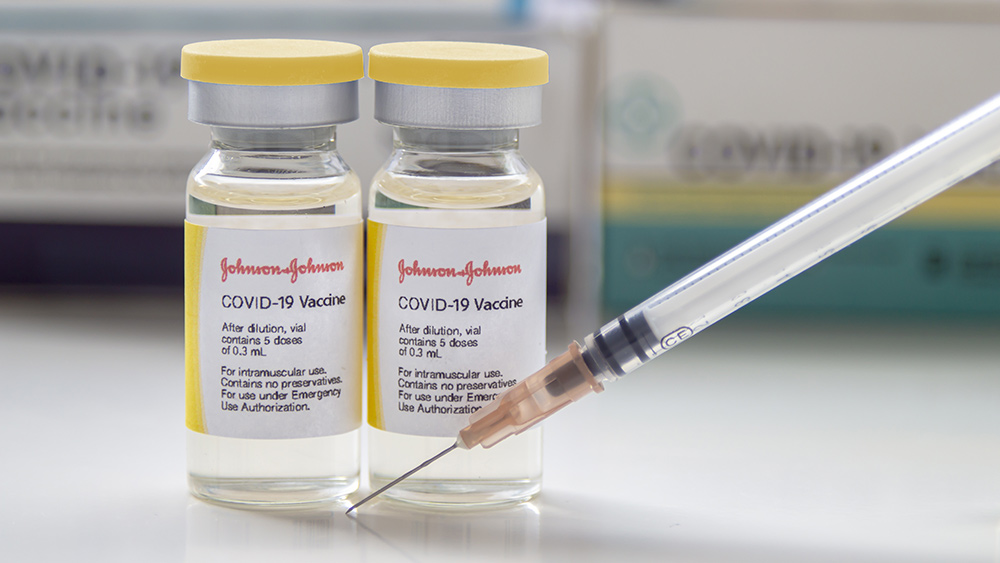New report reveals that social distancing is based on OUTDATED SCIENCE
04/07/2021 / By Ramon Tomey

A new report revealed that social distancing measures currently in place are based on outdated science. According to scientists, the so-called “six-foot rule” was based on experiences with past viruses that circulated before the pandemic.
A meta-analysis published in the British Medical Journal determined that the concept of social distancing is oversimplified and outdated. Scientists who published the paper claimed that it “overlooks the physics of respiratory emissions.” The paper also added that other factors such as ventilation, specific airflow patterns and activity type also play a role in spreading the virus once the droplets dissipate.
Furthermore, it mentioned that the infected person’s viral load, the susceptibility of other individuals near the infected person and the duration of their exposure to infected droplets should also be considered.
The meta-analysis noted that 80 percent of studies found that respiratory droplets expelled when sneezing could travel as far as 26 feet. Given these findings, the scientists posited that the Wuhan coronavirus could go beyond the minimum six-foot distance mandated by authorities.
Even former Food and Drug Administration (FDA) Commissioner Scott Gottlieb derided the concept of social distancing. The Trump administration’s FDA head admitted during a March 20 CNBC Closing Bell interview that the six-foot rule applied in the U.S. and the world “wasn’t based on clear science.” He remarked: “The six-foot distancing requirement has probably been the single costliest mitigation tactic we’ve employed in response to [COVID-19], and it really wasn’t based on clear science.”
According to Gottlieb, health authorities initially assumed that the Wuhan coronavirus would spread in the same way as influenza. Prior research on the flu virus indicated that it mainly spread through droplets – and standing six feet away from someone with influenza reduced droplet transmission.
“Six feet isn’t as effective as it would be if this was purely droplet transmission,” the former FDA head commented. He continued that health experts’ over-reliance on a flu-based model caused them to overlook other modes of transmission such as aerosols and contaminated surfaces. “We should have re-adjudicated this much earlier,” Gottlieb lamented. (Related: US may need to practice social distancing until 2022 to reduce coronavirus spread, say Harvard researchers.)
Even countries around the world do not agree on a standard measurement for “safe distance”
According to the BMJ meta-analysis, the droplet theory first emerged in the 19th century. German bacteriologist Carl Flügge initially proposed a safe distance of 1 to 2 meters in 1897, based on the distance where visible droplets contained pathogens. Fifty-one years later in 1948, a study that looked at the spread of hemolytic Streptococci bacteria found that 65 percent of participants produced large droplets only. Fewer than 10 percent of participants expelled droplets beyond 5.5 feet (1.7 meters).
But pathogen samples were collected from 10 percent of participants whose droplets fell 9.5 feet (2.9 meters) away. Large droplets falling close to an infected person nevertheless bolstered the scientific basis of the safe distance rule, now applied in the ongoing COVID-19 pandemic.
Different countries around the world interestingly have a varying definition of social distance. China, Denmark and France peg the distance at 1 meter. Germany and Australia peg it at a slightly linger 1.5 meters, while the U.S. follows 1.8 meters or 6 feet. With the different standards for safe social distance followed by different countries, it appears that such regulations are based on educated guesses instead of actual, sound science. (Related: For social distancing to truly work, people would need to stand 26 feet apart, say researchers.)
Furthermore, social distancing may protect against purported disease-causing respiratory droplets – at the cost of potential human connections. A March 2020 article published in Science magazine looked at this little-known consequence of this public health measure.
Yale University social scientist and physician Nicholas Christakis remarked that the spread of COVID-19 worldwide causes people to “suppress … profoundly human and evolutionary hard-wired impulses for connection.” Social distancing undermines the basic actions of seeing friends, congregating in groups and touching others, he continued. Christakis commented: “Pandemics are an especially demanding test … because we are not just trying to protect people we know, but also people we do not know or even … care about.”
Christakis noted that texting, email and video chatting apps such as Skype and FaceTime can alleviate the effects of prolonged distancing. “We are fortunate to live in an era where technology will allow us to see and hear our friends and family, even from a distance,” he said.
But technology cannot replace face-to-face conversations entirely. This is because elements of nonverbal communication such as body language, facial expressions and gestures can get lost with communication done via apps. University of Arizona behavioral scientist Chris Segrin explained: “When we interact with other people, a lot of the meaning conveyed between two people is actually not conveyed in the actual words – but in nonverbal behavior.”
Visit Pandemic.news to read more news about social distancing and other public health measures to stop COVID-19.
Sources include:
Tagged Under: coronavirus transmission, covid-19 pandemic, droplet theory, influzena virus, Medical Tyranny, outdated science, research, respiratory droplets, Scott Gottlieb, social distancing, Wuhan coronavirus
RECENT NEWS & ARTICLES
COPYRIGHT © 2017 RESEARCH NEWS





















